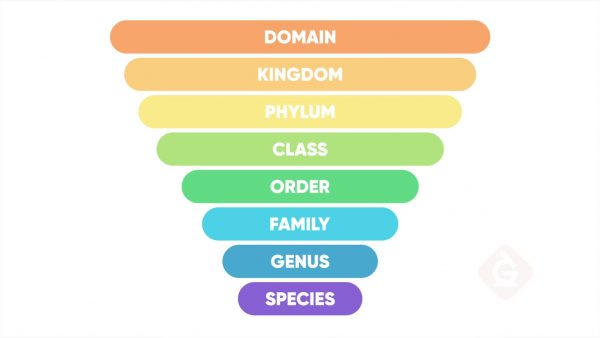Describe Three Criteria Generally Used to Classify Living Organisms
Public Domain By Regina Bailey Updated on November 28 2019 The Three Domain System developed by Carl Woese in 1990 is a system for classifying biological organisms. Bacteria Archaea and Eukaryota.
Why Do We Need A Biological Classification For Living Organisms And What Does It Tells Us Quora
For example it separates the presence of a nucleus.
. Radially symmetrical bilaterally symmetrical and asymmetrical. Therefore the presence of life processes is a fundamental criterion that can be used to decide whether something is alive or not. The assumption is that the more homologies two organisms share the closer they must be in terms of evolutionary distance.
Kingdom determined based on how a living organism obtains its food. Non-living thingsThese are the seven characteristics of living organisms. Structure of the body.
Linnaeus introduced the classification system that forms the basis of modern classification. Taxa in the Linnaean system include the kingdom phylum class order family genus and species. The members are eukaryotic Multicellular heterotrophic consumers.
Cell basic unit 2. Characteristics such as appearance reproduction mobility and functionality are just a few ways in which living organisms are grouped together. According to this system there are five main kingdoms.
Aristotle was one of the first scientists who began grouping organisms. Kingdom phylum class order family genus and species. Prokaryotes like archaea and bacteria dont have one.
Characteristics of a living organism. Classifying living things into these categories is an important way for scientists to show how living things are related to each other. It is now possible to classify them further into a series of hierarchical categories.
The Linnaean scheme for classification of living things lumps organisms together based on presumed homologies. Whitaker proposed that organisms should be broadly divided into kingdoms based on certain characters like the structure of the cell mode of nutrition the source of nutrition interrelationship body organization and reproduction. To use it scientists match an organism to the proper subgroup starting at the top with Kingdom and working down to Species.
He grouped organisms by their modes of transportation. Kingdom phylum classes order families genus and species. These specialized groups are collectively called the classification of living things.
Respiration The chemical reactions in cells that break down nutrient molecules and release energy for metabolism Sensitivity The ability to detect or sense stimuli in the internal or external environment and to make appropriate responses Growth Permanent increase in size and dry mass by an increase in cell number or cell size or both. List and discuss the characteristics of living things. The classification of living things includes 7 levels.
A organic b inorganic c respiration d photosynthesis e autotrophic f photosynthetic g chemosynthetic h heterotrophic i saprophytic j parasitic k pathogenic. All living organisms can be categorized into 3 domains of life. Classification of Organisms Questions.
Animalia Kingdom of Multicellular consumers. Evidence which can ensure something is alive or not Shape and Dimension Reproduction Growth Cellular structure Metabolism Movements Self-regulations Variation Coordination Definite life cycle Death. Phylum divides organisms within a kingdom based on physical similarities which suggest a common.
All living things are made of cells All living things must obtain and use energy All living things grow. Similarities in unborn embryo. They contain glycogen or fat as reserve food.
The Classification of Living Things is a type of taxonomy. The five kingdoms are. Only a few animal groups display radial symmetry.
Cells lack cell walls. Grow and develop 5. The first division of living things in the classification system is to put them into one of five kingdoms.
Organisms are classified into three Domains. Responding to external stimuli. Obtain and use materials and energy metabolism 6.
Nutrition is the process by which organisms obtain energy and raw materials from nutrients such as proteins carbohydrates and fats. Domains are the top-level classification which categorizes life in the most general way. CLASSIFICATION OF ORGANISMS QUESTIONS.
3 Ways to classify organisms. All based on universal genetic code DNA 4. Higher more inclusive divisions of the Linnaean system eg phylum and class are created by including.
The science of classifying living things is called taxonomy. Asymmetry is a unique feature of Parazoa link a. All living things reproduce All living things can move or adapt to their environment.
According to above factors you may easily classify all the living organisms in the earth as animals and plants but it is not fair to classify all the organisms to 2 groups while looking at the external features shown. Kingdom Monera Kingdom Protista Kingdom Fungi. 1 Nutrition Living things take in materials from their surroundings that they use for growth or to provide energy.
Swimming walking flying etc. Animals all multicellular animals plants all. This criterion was not used since students were only studying organisms at the macroscopic level.
At a very basic level of classification true animals can be largely divided into three groups based on the type of symmetry of their body plan. But eukarya have a nucleus.

Biological Classification Students Britannica Kids Homework Help

Classification Of Living Things Ck 12 Foundation

Read About The Classification Of Living Things Science For Grades 6 8 Printable
No comments for "Describe Three Criteria Generally Used to Classify Living Organisms"
Post a Comment